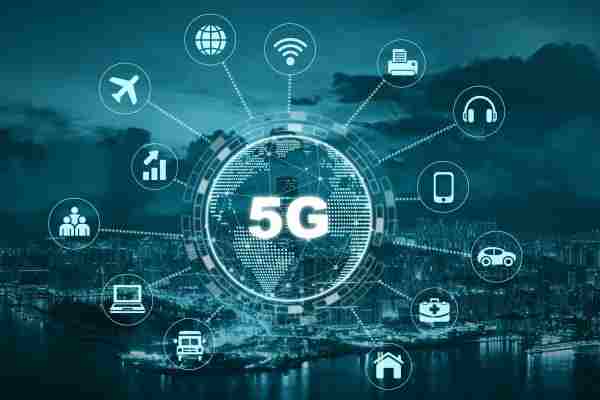Industries have been forced to reduce human interaction in their operations as a result of the pandemic and today rely more on remote work. This has made automation take centre stage across several industry verticals. And with the 5G technology, industries and manufacturing facilities are now advancing to their next frontier in order to scale up efficiency levels. It’s in the making of the 5G world.
The launch of 5G services in India, will play a key role in augmenting this automation trend, through data transmission at remarkable speeds. 5G speeds at a scale of 10GBPS, would provide low latency communication which is ultra-reliable. This will reduce the time taken to communicate information while increasing the rate at which information gets transferred, allowing millions of devices to be connected.
The adoption of any new technology comes with its share of challenges in execution and adoption. While everyone is in the race for implementing 5G, the tougher task is to build the infrastructure that can secure the network. Because of any software’s inherent vulnerabilities, there are higher chances of cyber threats on the 5G ecosystem which are not just confined to individuals but to nations as well.
The 5G world and Cybersecurity risks
Let’s look at the potential cybersecurity risks that are associated with the 5G world and the necessary steps that organisations and governments should take to ensure the secure usage of technology.
- Increase in the attack surface:
The total number of access points that a hacker can breach in a network is known as its attack surface. The dynamic software-based systems of 5G include many more sites for traffic routing than the current centralised hub-and-spoke structures of 4G.
Numerous uncontrolled ports of entry to the network can provide hackers access to cellular reception for logged-in users as well as position monitoring. Additionally, this new architecture renders obsolete conventional cybersecurity procedures, leaving the network vulnerable to harmful attacks.
This can be mitigated if organisations and governments plan well in advance and have a proper framework of regulation in place.
- Need to bridge the gap between old and new networks:
5G may still have security flaws as devices will be connected to older networks. Due to a weakness in the GSMA standard, users can be followed while connecting to 5G, utilizing data that is delivered unencrypted. Additionally, some 5G faults allow for “downgrade” attacks, and threat actors may utilize unpatched vulnerabilities in the earlier networks to launch an attack.
- Lack of network partitioning due to dynamic spectrum sharing:
To prevent cyberattacks, modern 4G systems use network partitioning techniques. Hardware divisions are used in networks to avoid having a single point of failure. If a network node is attacked, the attack can be “quarantined” to limit it without giving up control of the entire network.
In contrast, 5G uses small-cell, low-cost, short-range physical antennas within the coverage area. Each antenna has the potential to act as a single point of control. By merely overwhelming a single node, botnet and denial of service (DDoS) attacks can bring down entire sections of the network.
The 5G network also makes use of dynamic spectrum sharing, a communications technology that divides data packets into “slices.” The same amount of bandwidth is used to transmit each slice from parallel communications. Thus, the degree of the cyber threat is influenced by each slice.
With 5G, greater capabilities are now possible, hence it is vital to concentrate on the security of devices and apps. It would be unwise to construct 5G on top of a shoddy cybersecurity foundation, like the foolish man who built his house on sand. Never has a need existed when there are so many participants in the economy, each dependent on the other.
This is the time when organisations need to prepare their defences against potential cyberattacks through 5G, break free from unreliable 5G services, and develop a strategy for maintaining cyber readiness across the whole 5G world and ecosystem.
(This article is written by By Vaibhav Tare, CISO and Global Head – Cloud & Infrastructure Services, Fulcrum Digital. The views expressed in this article are of the author.)

